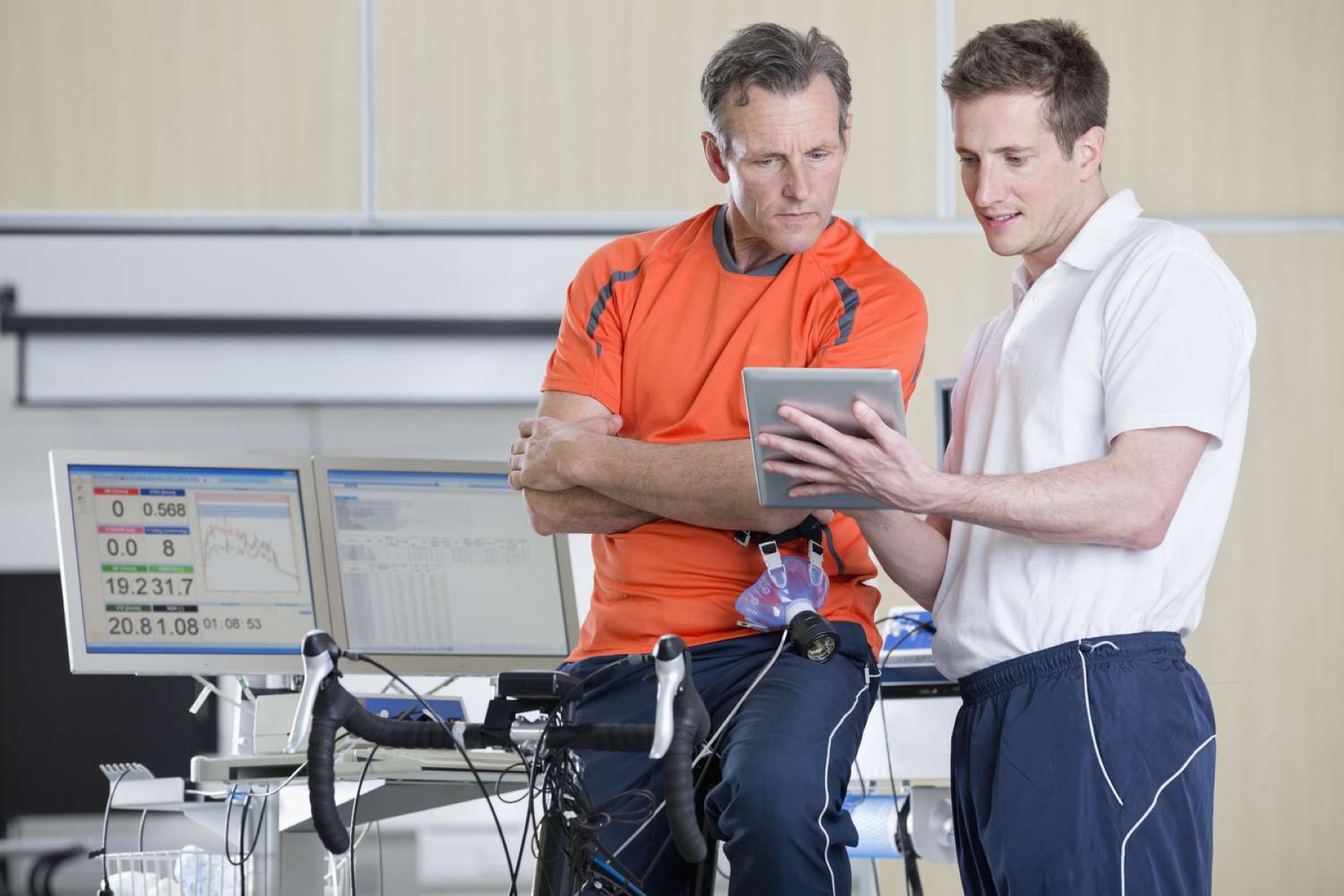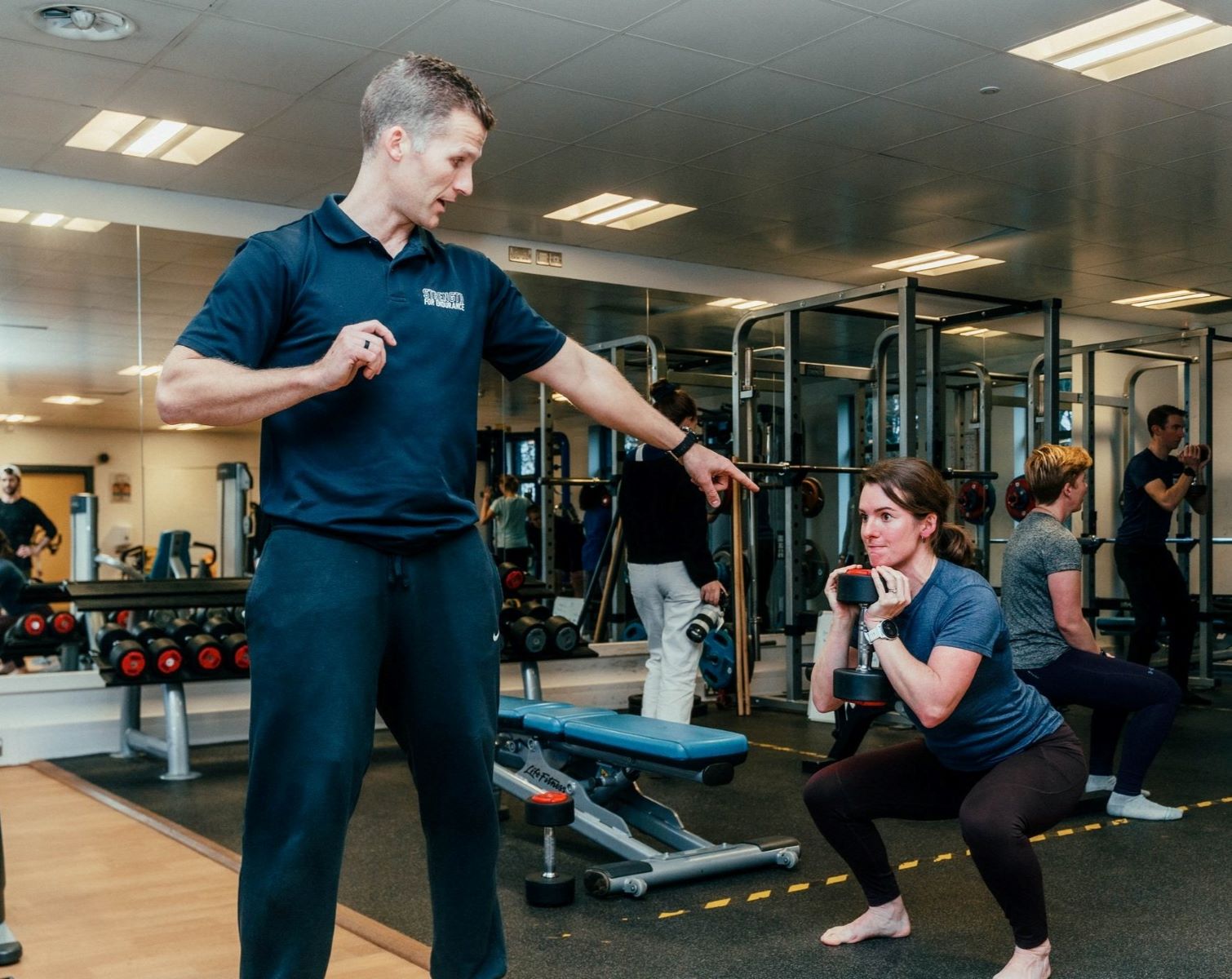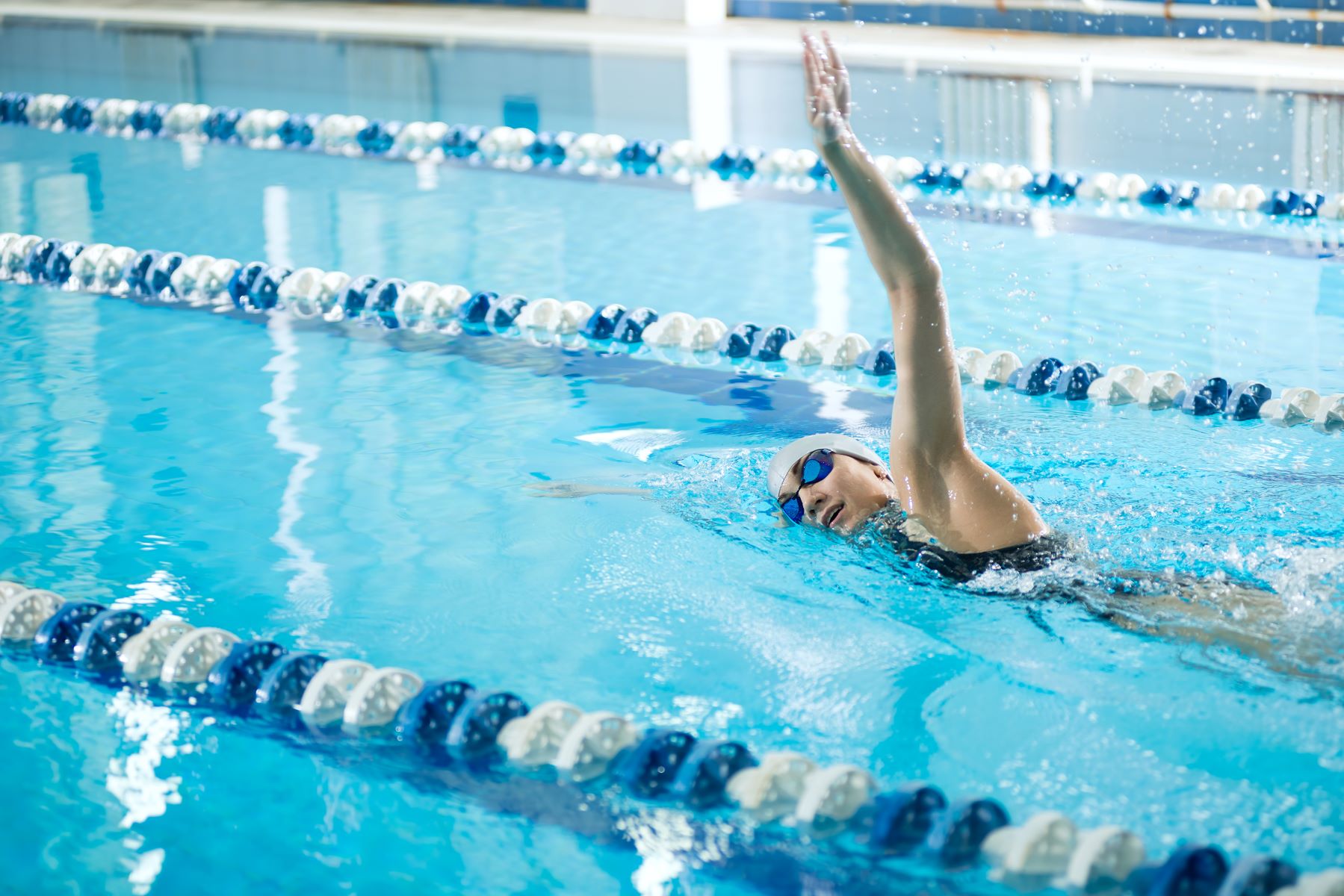Home>Misc>Featured>How Do You Measure Cardiorespiratory Endurance


Featured
How Do You Measure Cardiorespiratory Endurance
Modified: August 19, 2023
Discover how to measure and improve your cardiorespiratory endurance with our featured guide. Enhance your fitness and endurance levels today!
Introduction
Cardiorespiratory endurance is a crucial component of overall fitness and is defined as the ability of the body to sustain prolonged exercise and deliver oxygen to the working muscles efficiently. It plays a vital role in enhancing athletic performance, improving cardiovascular health, and maintaining a healthy weight. For individuals seeking to improve their fitness level, it is essential to measure and assess their cardiorespiratory endurance accurately.
Measuring cardiorespiratory endurance provides valuable insights into an individual’s fitness level and helps set realistic fitness goals. It allows individuals to track progress over time and make necessary adjustments to their training programs. Additionally, it helps fitness professionals and coaches design personalized exercise programs tailored to an individual’s specific needs and abilities.
There are several methods available for measuring cardiorespiratory endurance, ranging from laboratory-based tests to field tests that can be performed in various settings. The most commonly used method is measuring an individual’s maximal oxygen uptake (VO2 max) – the maximum amount of oxygen the body can use during exercise. VO2 max is considered the gold standard for assessing cardiorespiratory fitness and is often used in research studies and elite sports performance evaluations.
However, not everyone has access to the necessary equipment or facilities for conducting VO2 max tests. Therefore, various submaximal fitness tests have been developed as alternatives. These tests estimate an individual’s aerobic capacity based on their heart rate response to exercise. Though not as accurate as VO2 max tests, submaximal tests are convenient, cost-effective, and can be performed in a variety of settings.
Additionally, field tests are commonly used to assess cardiorespiratory endurance, especially in non-elite populations. These tests, such as the 1-mile run or the 6-minute walk test, are simple, practical, and can be conducted in a real-world setting without the need for specialized equipment.
Heart rate monitoring is another valuable tool for measuring cardiorespiratory endurance. By monitoring heart rate during exercise, individuals can gauge the intensity of their workouts and ensure they are working within their target heart rate zone for optimal cardiovascular conditioning.
Understanding the advantages and limitations of different measurement methods is crucial for accurate assessment and interpretation of cardiorespiratory endurance. Factors such as age, gender, genetics, training history, and environmental conditions can influence an individual’s cardiorespiratory fitness level, and these factors should be taken into consideration during the assessment process.
In this article, we will explore the various methods of measuring cardiorespiratory endurance, delve into the advantages and limitations of each method, and discuss the factors that can affect cardiorespiratory endurance. By understanding the different assessment techniques and their implications, individuals can make informed decisions about their fitness goals and design effective training programs to improve their cardiorespiratory endurance.
Definition of Cardiorespiratory Endurance
Cardiorespiratory endurance, also known as aerobic endurance or cardiovascular endurance, refers to the ability of the body’s cardiovascular and respiratory systems to supply oxygen to the working muscles during sustained physical activity. It is a measure of how effectively the heart, lungs, and circulatory system deliver oxygen to the muscles and remove waste products, such as carbon dioxide, during prolonged exercise.
In simpler terms, cardiorespiratory endurance is the capacity of the body to perform continuous, repetitive, and dynamic physical activity for an extended period without becoming fatigued. It is an indicator of both the efficiency and effectiveness of the body’s oxygen utilization and energy production processes during exercise.
Cardiorespiratory endurance is often assessed using measures such as maximal oxygen uptake (VO2 max), which represents the maximum amount of oxygen that an individual can utilize during intense exercise. A higher VO2 max indicates a greater ability to utilize oxygen and transport it to the working muscles, resulting in improved endurance performance.
Cardiorespiratory endurance is influenced by various factors, including genetics, age, gender, fitness level, and training history. Regular aerobic exercise, such as running, swimming, cycling, or brisk walking, plays a crucial role in enhancing cardiorespiratory endurance. Over time, the cardiovascular and respiratory systems adapt to the demands of exercise by becoming more efficient in oxygen delivery, leading to improvements in endurance capacity.
Having good cardiorespiratory endurance is important for overall health and well-being. It has numerous benefits, including improved heart health, better lung function, increased energy levels, enhanced metabolism and weight management, reduced risk of chronic diseases such as cardiovascular disease, diabetes, and obesity, and improved mental health and cognitive function.
It’s important to note that cardiorespiratory endurance is not solely determined by the ability to sustain high-intensity exercise, but also by the capability to perform lower-intensity activities for long durations. It is a combination of both the body’s ability to utilize oxygen efficiently and the muscular endurance required to sustain physical activity over extended periods.
By developing and maintaining good cardiorespiratory endurance, individuals can improve their overall fitness, increase their tolerance to exercise, and enjoy a more active and healthy lifestyle.
Importance of Measuring Cardiorespiratory Endurance
Measuring cardiorespiratory endurance is essential for several reasons. It provides valuable information about an individual’s fitness level, helps set realistic fitness goals, tracks progress over time, and allows for personalized exercise programming. Here are some key reasons why measuring cardiorespiratory endurance is important:
- Evaluating Fitness Level: Measuring cardiorespiratory endurance provides an objective assessment of an individual’s aerobic fitness level. It helps identify strengths and weaknesses in cardiovascular conditioning and serves as a baseline for future comparisons. This information is vital for setting appropriate exercise intensity and determining the most effective training methods.
- Setting Realistic Goals: By knowing their current cardiorespiratory endurance level, individuals can establish realistic fitness goals that are specific, measurable, attainable, relevant, and time-bound (SMART goals). Whether aiming to run a marathon or improve overall endurance, having a benchmark allows individuals to take small steps towards their desired outcomes.
- Tracking Progress: Regularly measuring cardiorespiratory endurance helps monitor progress over time. It allows individuals to see if their training efforts are producing the desired results and make adjustments if necessary. Progress tracking can be motivating and provides a sense of accomplishment, especially when improvements in endurance performance are observed.
- Designing Personalized Exercise Programs: Measuring cardiorespiratory endurance helps fitness professionals and coaches develop customized exercise programs tailored to an individual’s specific needs and abilities. It ensures that exercise intensity, duration, and frequency are appropriate and optimized for improving cardiorespiratory fitness.
- Motivating and Challenging Workouts: Measuring cardiorespiratory endurance provides concrete data that can fuel motivation and enhance the effectiveness of workouts. It allows individuals to see if they are working at the desired intensity level, maintain the appropriate heart rate zone, and challenge themselves to reach new levels of endurance performance.
- Identifying Health Risks: Cardiorespiratory endurance is closely linked to overall health. Measuring it can help identify potential risks for cardiovascular diseases, metabolic disorders, and chronic health conditions. Individuals with low cardiorespiratory endurance may be at greater risk and can take appropriate measures to improve their health and reduce the risk of future complications.
Overall, measuring cardiorespiratory endurance is crucial for optimizing fitness, setting achievable goals, tracking progress, and designing personalized exercise programs. It empowers individuals to take control of their health, improve their endurance performance, and enjoy the numerous physical and mental benefits that come with good cardiorespiratory fitness.
Methods of Measuring Cardiorespiratory Endurance
There are several methods available for measuring cardiorespiratory endurance, each with its advantages and limitations. These methods range from laboratory-based tests to field tests and heart rate monitoring. Here are some common methods of measuring cardiorespiratory endurance:
- Maximal Oxygen Uptake (VO2 max) Tests: VO2 max tests are considered the gold standard for assessing cardiorespiratory endurance. These tests measure the maximum amount of oxygen an individual can utilize during intense exercise. They are typically conducted in a laboratory setting using specialized equipment to measure oxygen consumption and heart rate. Although accurate, VO2 max tests can be expensive, time-consuming, and require trained professionals to administer and interpret the results.
- Submaximal Fitness Tests: Submaximal fitness tests are a practical and cost-effective alternative to VO2 max tests. These tests estimate an individual’s aerobic capacity by measuring their heart rate response to submaximal exercise. The most commonly used submaximal tests include the Astrand-Rhyming Cycle Ergometer Test and the YMCA Cycle Ergometer Test. Submaximal tests are more convenient and can be administered in a variety of settings, but they may not provide the same level of accuracy as VO2 max tests.
- Field Tests for Cardiorespiratory Endurance: Field tests are simple, practical, and easily administered tests for measuring cardiorespiratory endurance in real-world settings. Common examples include the 1-mile run, the Cooper 12-Minute Run, and the 6-minute walk test. Field tests are widely used, especially in non-elite populations, as they do not require specialized equipment or laboratory settings. However, they may not provide as precise measurements as laboratory-based tests.
- Heart Rate Monitoring: Monitoring heart rate during exercise is another valuable method for assessing cardiorespiratory endurance. By tracking heart rate, individuals can gauge the intensity of their workouts and ensure they are working within their target heart rate zone for optimal cardiovascular conditioning. Heart rate monitors, such as chest straps or wrist-based devices, are commonly used to measure heart rate during exercise. This method is convenient, affordable, and can be used for self-monitoring during various types of physical activity.
It is worth noting that each method comes with its advantages and limitations. Some methods, such as VO2 max tests, provide more accurate and objective measurements but may not be accessible to everyone due to cost or limited availability. On the other hand, field tests and heart rate monitoring provide a more practical and convenient approach, but may be less precise.
It is important to choose the measurement method that best suits individual needs and circumstances. Consulting a fitness professional or exercise specialist can help determine the most appropriate method based on goals, fitness level, equipment availability, and personal preferences.
By employing these different measurement methods, individuals can gain insights into their cardiorespiratory endurance, track progress, and make informed decisions about their fitness regimen. The variety of options allows for flexibility in measuring cardiorespiratory endurance and tailoring training programs to improve overall fitness and endurance performance.
Maximal Oxygen Uptake (VO2 max)
Maximal Oxygen Uptake (VO2 max) is a measure of an individual’s maximum capacity to utilize oxygen during intense exercise. It represents the maximum amount of oxygen that the body can take in, transport to the working muscles, and utilize for energy production. VO2 max is considered the gold standard for assessing cardiorespiratory endurance and is often used in research studies and elite sports performance evaluations.
VO2 max tests are typically conducted in a laboratory setting using specialized equipment to measure oxygen consumption and heart rate. The test involves participants performing incremental exercise on a treadmill or stationary bike while wearing a mask or mouthpiece connected to a metabolic system. The metabolic system analyzes the participant’s breath and calculates the volume of oxygen consumed and carbon dioxide produced.
During the test, the exercise intensity gradually increases until the individual reaches their maximum effort or is unable to continue. The oxygen consumption and heart rate data collected during the test are used to determine the individual’s VO2 max. The result is expressed as milliliters of oxygen per kilogram of body weight per minute (ml/kg/min).
VO2 max is influenced by various factors, including genetics, age, gender, and training status. Elite endurance athletes often have higher VO2 max values due to their specific training adaptations and genetic predisposition. However, VO2 max can be improved through regular aerobic exercise training, such as running, cycling, swimming, or high-intensity interval training.
The assessment of VO2 max provides several valuable pieces of information. Not only does it measure an individual’s cardiorespiratory endurance, but it also helps determine an individual’s exercise intensity zones. These zones can be based on a percentage of the VO2 max value and enable individuals to train effectively within different heart rate ranges for different fitness goals, such as endurance training or fat burning.
While VO2 max testing is recognized as the most accurate method of assessing cardiorespiratory fitness, it does have some limitations. The test requires specialized equipment, trained personnel, and a controlled laboratory environment. Additionally, the test is physically demanding and may not be suitable for individuals with certain health conditions or physical limitations.
Despite these limitations, VO2 max testing remains a valuable tool for assessing cardiorespiratory endurance in research, performance, and clinical settings. It provides an objective measure of an individual’s aerobic capacity, influences exercise prescription, and serves as a baseline for gauging improvement over time.
It is important to note that while VO2 max is an excellent indicator of an individual’s cardiovascular fitness level, it is not the only factor that predicts athletic performance. Other factors, such as muscular strength, power, and efficiency, also play critical roles in endurance activities.
In summary, VO2 max is a measure of maximal oxygen uptake, indicating an individual’s aerobic capacity. It is obtained through specialized laboratory testing and provides valuable insights into cardiorespiratory endurance. VO2 max testing is widely used in research, sports performance evaluation, and exercise prescription to optimize training programs and monitor progress over time.
Submaximal Fitness Tests
Submaximal fitness tests are practical alternatives to maximal oxygen uptake (VO2 max) tests for measuring cardiorespiratory endurance. These tests estimate an individual’s aerobic capacity by measuring their heart rate response to submaximal exercise. While not as accurate as VO2 max tests, submaximal tests are convenient, cost-effective, and can be performed in various settings.
The most commonly used submaximal fitness tests include the Astrand-Rhyming Cycle Ergometer Test and the YMCA Cycle Ergometer Test. These tests involve participants performing steady-state exercise, usually on a stationary bike, at a predetermined submaximal intensity level for a specific duration.
During the test, heart rate is monitored using a heart rate monitor or by manually measuring the pulse. The heart rate response is compared to age-specific target heart rate ranges to estimate the individual’s aerobic capacity. The results of the submaximal test can then be used to prescribe appropriate exercise intensities for aerobic training programs.
Submaximal fitness tests are advantageous because they do not require specialized equipment or a controlled laboratory environment. They can be administered by fitness professionals in fitness centers, schools, or community settings. These tests are also less physically demanding compared to VO2 max testing, making them suitable for a wider range of individuals, including those with lower fitness levels or health considerations.
However, submaximal fitness tests have limitations. The estimation of VO2 max based on heart rate response is dependent on certain assumptions about the relationship between heart rate and oxygen consumption. These assumptions may not apply equally to everyone, leading to potential inaccuracies in estimating an individual’s true cardiorespiratory endurance.
Moreover, submaximal fitness tests may not be suitable for individuals who have certain cardiovascular conditions or are taking medications that affect heart rate response. It is important to consult with a healthcare professional or exercise specialist to ensure the appropriateness and safety of submaximal testing.
Despite these limitations, submaximal fitness tests provide a practical and cost-effective means of estimating cardiorespiratory endurance. They can be used for initial assessments, progress tracking, and guiding exercise prescription in various populations, including individuals seeking general fitness improvement, those participating in cardiac rehabilitation programs, and non-elite athletes.
It is important to remember that submaximal fitness tests provide estimates of aerobic capacity and are not as accurate as laboratory-based VO2 max tests. Therefore, they should be interpreted with caution and used in conjunction with other assessment methods and subjective feedback from individuals to gain a comprehensive understanding of their cardiorespiratory endurance level.
Overall, submaximal fitness tests offer a practical and accessible approach to assessing cardiorespiratory endurance. They provide valuable information for designing individualized exercise programs and monitoring changes in fitness over time, contributing to improved overall health and well-being.
Field Tests for Cardiorespiratory Endurance
Field tests for cardiorespiratory endurance are practical and easily administered assessments that can be performed in real-world settings. These tests provide a convenient and cost-effective way to measure an individual’s aerobic capacity and are commonly used, especially in non-elite populations.
One of the most widely recognized field tests for cardiorespiratory endurance is the 1-mile run. In this test, individuals run or jog one mile (1.6 kilometers) as fast as they can. The time taken to complete the distance is recorded and used as an indicator of aerobic fitness. The 1-mile run is simple, requires minimal equipment, and can be performed in various environments such as parks, tracks, or on the road.
Another popular field test is the Cooper 12-Minute Run, which involves individuals running or jogging as far as possible in 12 minutes. The total distance covered in the given time is an estimation of an individual’s aerobic capacity. This test is also straightforward and does not require any specialized equipment or facilities.
The 6-minute walk test is another field test used to assess cardiorespiratory endurance, particularly in older populations or individuals with mobility limitations. In this test, individuals walk as far as possible in six minutes. The distance covered is used as an indicator of aerobic fitness and functional capacity.
Field tests for cardiorespiratory endurance have several advantages. They are practical and can be easily conducted in various settings, making them accessible to a wide range of individuals. These tests also mimic real-world activities and environments, providing a more functional assessment of aerobic capacity compared to laboratory-based tests. They require minimal equipment, making them cost-effective and suitable for large-scale fitness assessments or group classes.
However, field tests for cardiorespiratory endurance may have some limitations. They may not be as accurate as laboratory tests, and the results can be influenced by environmental factors, such as temperature, terrain, and weather conditions. The performance in these tests can also be influenced by individual motivation and pacing strategies.
It is important to note that field tests should be performed and interpreted with caution. They are designed for general fitness assessments and may not be suitable for individuals with specific health considerations or those seeking precise measurements of their cardiorespiratory endurance. Consulting with a qualified fitness professional or exercise specialist is recommended to ensure proper administration and interpretation of field tests.
Field tests for cardiorespiratory endurance provide a practical and accessible means of assessing aerobic capacity in a real-world context. They can be used to establish baseline fitness levels, track progress over time, and motivate individuals to improve their cardiorespiratory fitness. Incorporating field tests into fitness programs can add variety and practicality, allowing individuals to measure their endurance and set goals that align with their everyday activities and fitness aspirations.
Heart Rate Monitoring
Heart rate monitoring is a valuable method for measuring and assessing cardiorespiratory endurance. By monitoring heart rate during exercise, individuals can gauge the intensity of their workouts and ensure they are working within their target heart rate zone for optimal cardiovascular conditioning.
Heart rate is a reflection of the body’s response to exercise, with higher heart rates indicating greater cardiovascular stress. During aerobic exercise, such as running or cycling, heart rate increases to meet the increased demands for oxygen and fuel. This increased heart rate helps supply oxygen-rich blood to the working muscles and remove waste products.
Heart rate monitoring can be done using various devices, such as chest straps or wrist-based heart rate monitors. These devices use sensors to detect the electrical activity of the heart and provide real-time heart rate readings.
To effectively monitor heart rate during exercise, individuals need to determine their target heart rate zone. This zone is a percentage range of an individual’s maximum heart rate (the highest heart rate achievable) and is based on their fitness level and goals. The target heart rate zone ensures that individuals are exercising at an intensity that challenges their cardiovascular system without overexertion.
Heart rate training zones are typically divided into different intensity levels, such as moderate-intensity, vigorous-intensity, and anaerobic threshold, each associated with a specific percentage range of the maximum heart rate. For example, the moderate-intensity zone may be between 50% to 70% of the maximum heart rate, while the vigorous-intensity zone may be between 70% to 85% of the maximum heart rate.
By monitoring heart rate during exercise and staying within the target heart rate zone, individuals can ensure that they are working at an appropriate intensity for improving cardiorespiratory endurance. This helps individuals maximize the cardiovascular benefits of their workouts and avoid under- or over-exertion.
Heart rate monitoring offers several benefits for assessing and improving cardiorespiratory endurance. It provides immediate feedback on exercise intensity, allowing individuals to make adjustments during their workouts to stay within their desired heart rate zone. Monitoring heart rate over time can also track improvements in fitness level, as individuals may find that they can sustain a higher intensity or recover more quickly between bouts of exercise as their cardiorespiratory endurance improves.
It is important to note that heart rate monitoring is a useful tool but has some limitations. Factors such as fitness level, age, hydration, caffeine intake, and stress can affect heart rate responses and may not always accurately reflect the true cardiorespiratory demand during exercise. Additionally, heart rate monitors may vary in accuracy, and individual variability can also affect heart rate readings.
Despite these limitations, heart rate monitoring provides a practical and accessible method for assessing and optimizing cardiorespiratory endurance. By incorporating heart rate monitoring into their fitness routine, individuals can track their progress, monitor their exercise intensity, and make informed decisions to improve their cardiovascular health and endurance performance.
Advantages and Limitations of Different Measurement Methods
There are several measurement methods available for assessing cardiorespiratory endurance, each with its own set of advantages and limitations. Understanding these factors is crucial for selecting the most appropriate method based on individual needs and circumstances. Here are the advantages and limitations of different measurement methods:
Maximal Oxygen Uptake (VO2 max) Tests:
Advantages:
- Provides the most accurate and objective measure of cardiorespiratory endurance.
- Commonly used in research studies and elite sports performance evaluations.
- Influences exercise prescription and training program design.
Limitations:
- Requires specialized equipment, a controlled laboratory environment, and trained professionals.
- Can be expensive, time-consuming, and physically demanding.
- May not be suitable for individuals with certain health conditions or physical limitations.
Submaximal Fitness Tests:
Advantages:
- Practical and cost-effective alternatives to VO2 max tests.
- Can be performed in various settings, such as fitness centers or community locations.
- Provide estimates of aerobic capacity based on heart rate response.
Limitations:
- Less accurate than VO2 max tests and influenced by assumptions about heart rate-oxygen consumption relationship.
- May not be suitable for individuals with certain cardiovascular conditions or those taking medications.
Field Tests for Cardiorespiratory Endurance:
Advantages:
- Simple, practical, and easily administered in real-world settings.
- Do not require specialized equipment or controlled laboratory environments.
- Offer a functional assessment of endurance performance.
Limitations:
- May not be as accurate as laboratory-based tests.
- Results can be influenced by environmental factors, pacing strategies, and individual motivation.
- May not be suitable for individuals with specific health considerations or those seeking precise measurements of cardiorespiratory endurance.
Heart Rate Monitoring:
Advantages:
- Provides real-time feedback on exercise intensity.
- Allows individuals to stay within their target heart rate zone for optimal cardiovascular conditioning.
- Can be used during different types of physical activity and does not require specialized equipment.
Limitations:
- Heart rate response can be influenced by various factors, such as fitness level, age, and stress.
- Heart rate monitors may vary in accuracy, and individual variability can affect heart rate readings.
- Heart rate monitoring alone may not provide an accurate assessment of cardiorespiratory endurance.
It is important to consider these advantages and limitations when selecting a measurement method for assessing cardiorespiratory endurance. Additionally, consulting with a qualified fitness professional or exercise specialist can provide valuable guidance in selecting the most appropriate method based on individual goals, fitness level, and equipment availability. By understanding the strengths and limitations of each method, individuals can make informed decisions and obtain meaningful insights into their cardiorespiratory fitness.
Factors Affecting Cardiorespiratory Endurance
Cardiorespiratory endurance is influenced by a variety of factors that can impact an individual’s ability to sustain prolonged exercise and deliver oxygen to the working muscles efficiently. Understanding these factors is essential for optimizing cardiorespiratory fitness and designing effective training programs. Here are key factors that can affect cardiorespiratory endurance:
Genetics:
Genetic factors play a significant role in determining an individual’s potential for cardiorespiratory endurance. Certain genetic variations can influence the structure and function of the cardiovascular and respiratory systems, affecting factors such as heart size, lung capacity, oxygen exchange efficiency, and muscle fiber type composition.
Age:
Aging is associated with natural declines in cardiorespiratory endurance. With age, there is a decrease in maximum heart rate, reduction in lung capacity, and a decline in the response of the cardiovascular system to exercise. Regular aerobic exercise can help slow down age-related declines in cardiorespiratory fitness.
Genders:
There are gender differences in cardiorespiratory endurance. In general, males tend to have higher absolute and relative VO2 max values compared to females. These differences can be attributed to variations in body composition, hormone levels, and physiological differences between males and females.
Fitness Level:
The initial level of cardiorespiratory fitness influences an individual’s endurance capacity. Those with higher fitness levels typically have greater cardiorespiratory endurance as their bodies are more efficient at transporting and utilizing oxygen. Regular aerobic exercise training is crucial for improving cardiorespiratory fitness regardless of initial fitness level.
Training History:
Past training and exercise history can impact cardiorespiratory endurance. Individuals who have engaged in regular aerobic training and have a history of endurance exercise tend to exhibit higher levels of cardiorespiratory fitness compared to those who are relatively sedentary or have not participated in regular aerobic activities.
Environmental Conditions:
Environmental factors such as altitude, temperature, humidity, and air quality can influence cardiorespiratory endurance. High altitude environments, for example, can decrease oxygen availability, challenging cardiorespiratory systems. Extreme temperatures and high humidity can also place additional strain on the cardiovascular system during exercise.
Health Status:
Underlying health conditions, such as heart disease, lung disorders, obesity, and metabolic conditions, can impact cardiorespiratory endurance. These conditions may affect the cardiovascular and respiratory systems, limiting oxygen delivery and utilization during exercise. Engaging in regular physical activity under medical supervision can help mitigate some of the effects of these conditions.
Training Adaptations:
Regular aerobic exercise training leads to specific physiological adaptations that improve cardiorespiratory endurance. These adaptations include increased stroke volume (the amount of blood pumped with each heartbeat), improved oxygen extraction in muscles, and enhanced efficiency of oxygen utilization. As a result, trained individuals tend to have higher levels of cardiorespiratory fitness.
It is important to recognize that these factors are interconnected and can interact with one another. For example, genetics may influence an individual’s initial fitness level, which can be further improved through targeted training adaptations. Understanding these factors can help individuals and fitness professionals design appropriate training programs that consider individual strengths, weaknesses, and goals.
By addressing these factors through regular aerobic exercise, proper nutrition, rest and recovery, and maintaining an overall healthy lifestyle, individuals can optimize their cardiorespiratory endurance and improve their overall physical fitness and well-being.
Conclusion
Measuring cardiorespiratory endurance is crucial for assessing fitness levels, setting goals, and designing effective training programs. Various measurement methods, including maximal oxygen uptake (VO2 max) tests, submaximal fitness tests, field tests, and heart rate monitoring, offer different advantages and limitations. Understanding these factors allows individuals to select the most appropriate method based on their needs and circumstances.
VO2 max tests provide the most accurate and objective measure of cardiorespiratory endurance but require specialized equipment and trained professionals. Submaximal fitness tests are cost-effective alternatives that estimate aerobic capacity based on heart rate response but may not be as accurate. Field tests offer practical assessments in real-world settings but may lack precision. Heart rate monitoring provides real-time feedback on exercise intensity and can guide individuals to stay within their target heart rate zones.
Factors such as genetics, age, gender, fitness level, training history, environmental conditions, and health status can impact cardiorespiratory endurance. However, regular aerobic exercise training can improve cardiorespiratory fitness regardless of these factors. By addressing these influences and incorporating appropriate training adaptations, individuals can optimize their endurance performance and overall cardiovascular health.
Incorporating cardiorespiratory endurance measurements and training into a fitness routine offers numerous benefits. It helps evaluate fitness levels, set realistic goals, track progress, motivate individuals, and design personalized exercise programs. Cardiorespiratory endurance assessments play a vital role in optimizing overall health, improving athletic performance, and promoting a more active and healthy lifestyle.
It is essential to remember that cardiorespiratory endurance is just one aspect of physical fitness. Strength, flexibility, balance, and muscular endurance are also vital components that should be considered in a comprehensive fitness routine. Consulting with a qualified fitness professional or exercise specialist can provide guidance and ensure a well-rounded approach to fitness and overall well-being.
By incorporating cardiorespiratory endurance measurements and training methods, individuals can improve their endurance capacity, enhance their overall fitness level, and enjoy the numerous physical and mental benefits that come with good cardiorespiratory fitness.









